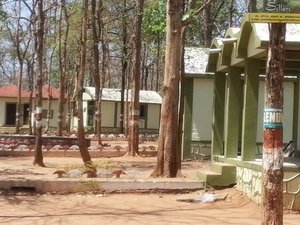Advertisement

 Pench Tiger Reserve- Sillari, Nagpur
Pench Tiger Reserve- Sillari, Nagpur
Cottages at Amaltas Ecotourism Complex, Sillari- PenchIn developing countries and in India Ecotourism is mostly believed as ‘visiting to natural areas specially bestowed with wildlife i.e. to forest, sanctuaries and national wildlife parks’. Hence many state governments have tendered ecotourism custody to their respective forest departments due to the growing trend of traveling to National parks and Wildlife sanctuaries. Many Sanctuaries in India are now getting the Ecotourism boost.
Ecotourism is in its nascent stage in India and started taking shape in various states i.e. in Kerala- Thenmala which is the first planned ecotourism destination in India, Karnataka- Coorg well known Ecotourism destination, Madhya Pradesh, Uttranachal and Himalayas. Other states like Maharashtra, Uttar Pradesh, Rajasthan, Assam, Bengal, Himachal Pradesh, etc have initiated Ecotourism through their various wildlife sanctuaries. The Ministry of Tourism, Ministry of Environment and Forest,Government of India along with the stake holders of tourism have taken a promotional initiative ‘Tigers - Our National Beauties’ to augment Wildlife conservation and Ecotourism. Many policies are planned to have sustainable tourism in the form of Wildlife tourism and Ecotourism.
Visiting to national parks, wildlife sanctuary or biological reserves is not Ecotourism but can be referred to as NEAT ( Nature, Eco and Adventure Tourism) as little emphasis to other components of Ecotourism is administered here. Most of the growth of NEAT is increasing in and around national parks. Since NEAT is increasing best-practice in environmental management is becoming increasingly significant. This includes minimal impact on education and interpretation. What about the other panoramic natural areas available in most of the rural places, who will take care of it? Other places having natural beauty and potential to attract tourists are usually ignored in terms of its holistic development and maintenance.
Advertisement
Tot: 0.149s; Tpl: 0.01s; cc: 10; qc: 49; dbt: 0.0769s; 1; m:domysql w:travelblog (10.17.0.13); sld: 1;
; mem: 1.1mb

 Pench Tiger Reserve- Sillari, Nagpur
Pench Tiger Reserve- Sillari, Nagpur